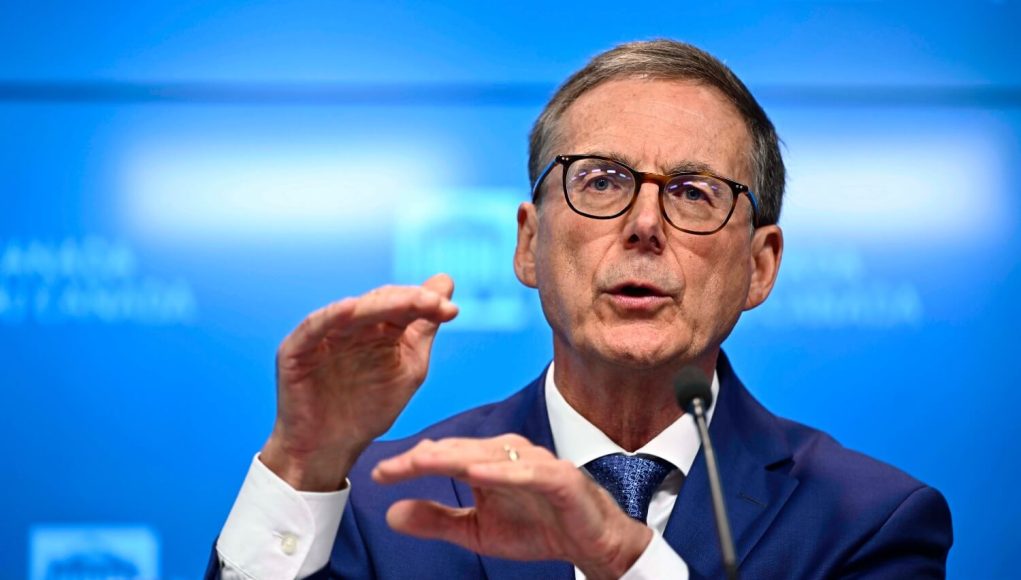Holding steady at 2.75%
That decision arrived in the midst of the United States’ ever-shifting global trade war, and Bank of Canada governor Tiff Macklem made clear that the disruption from south of the border was the clear focus of Wednesday’s decision.
“The dramatic protectionist shift in U.S. trade policy and the chaotic delivery have increased uncertainty, roiled financial markets, diminished global growth prospects and raised inflation expectations,” he said in prepared remarks. “The future is no clearer. We still do not know what tariffs will be imposed, whether they’ll be reduced or escalated, or how long all of this will last.”
What warrants a BoC rate hike
The Bank of Canada raises the policy rate when central bankers fear inflation could accelerate and lower it when policymakers want to stimulate growth in the economy. But both scenarios are in play right now amid what Macklem called “considerable uncertainty” tied to the United States’ global tariff campaign.
“We decided to hold our policy rate unchanged as we gain more inflation about both the path forward for U.S. tariffs and their impacts,” Macklem said.
Why the hold?
The central bank issued a pair of economic forecasts alongside the rate decision.
- One sees the tariffs and threats negotiated away quickly and the economy stall, but escape with limited damage. Inflation would ease to 1.5% for most of the year—mostly thanks to the elimination of the consumer carbon tax—before rising back to the central bank’s 2% target.
- The other forecast envisions a more protracted global trade war that sends Canada into a year-long recession.
This scenario assumes the United States imposes tariffs of 12% on all Canadian goods with a higher 25% on motor vehicles and parts and another 25% import tax applied globally; Canada also responds here with similar tariffs on a selection of U.S. goods.
Canadian real gross domestic product contracts in this projection for four consecutive quarters, averaging declines of 1.2%, and the U.S. tariffs “permanently reduce Canada’s potential output and its standard of living,” the forecast reads. That outcome also sees inflation rise higher, topping 3% in 2026, and making the Bank of Canada’s job that much harder.
The central bank noted these two scenarios represent only a slice of the possible outcomes. But the governing council used this double-barrelled framework to make its latest interest rate decision, attempting to set monetary policy that would best suit either outcome—in this case, a rate hold.








